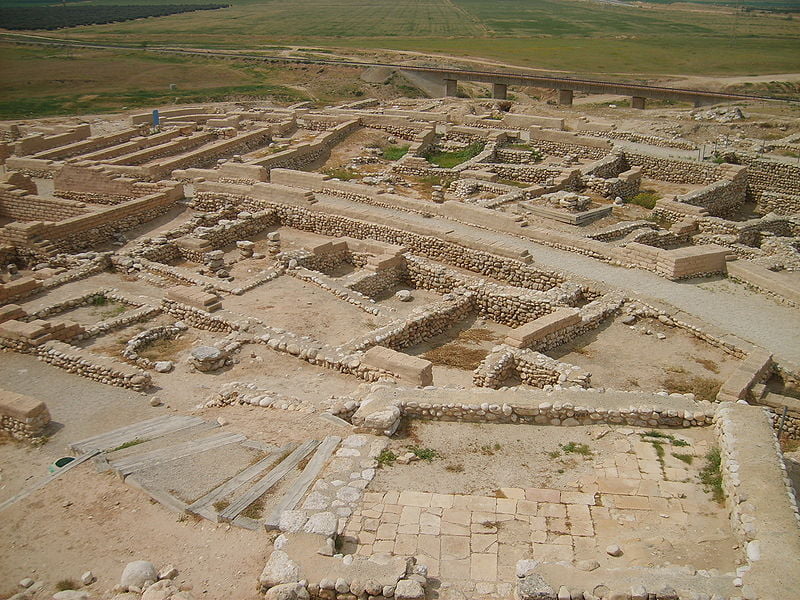Reconstruction of Tel Be’er Sheva’s ancient buildings, believed to be the remains of the biblical town of Be’er Sheva, enables an understanding of sophisticated urban planning during biblical times. The reconstruction of the city, which is mentioned several times in the Tanakh, or Old Testament, allows for close observation of the city plan and a long-range view of the area.
Tel Be’er Sheva is located between Be’er Sheva’s river and its creek, the Hebron Creek. In ancient times, the rich wells of Be’er Sheva’s river marked the southern border of the settled land.
In archaeological digs in the city, two-thirds of the ancient town have been uncovered. Here, one can discover Israel’s most beautiful example of the principles of urban planning in the biblical era.
The Nature and Parks Authority recently reconstructed significant parts of these ancient structures. Visitors to the ruins can view a 70-meter-deep well; city streets; storerooms; public and private buildings; a large wall and gates. The authority also reconstructed an exact copy of an ancient altar found on the site (the original can be found in the Israel Museum.)
The highlight of the visit to the ruins is a sophisticated water factory indicating the high engineering capability of the country’s biblical ancestors. The water factory is an enormous square pit, 15 meters deep. It is surrounded by high walls lined with pebbles and descends into a huge underground pool that gathered all the flood waters which flowed into the Hebron river.
Biblical times were mainly characterized by partially nomadic settlements based on livestock and agriculture. The first official recruitment to construction of a settlement with an administrative urban character, as is represented in Tel Be’er Sheva, appeared for the first time in 1000 B.C.
According to archeological findings, the city area was limited, and was comprised of 75 houses constructed in a four room house style. According to researchers’ calculations, about 300 people resided in the city, most of whom held positions in administration, army, and religious services.
…
For the original article in Hebrew click here
Translation by Liat Biron and Maya Ehrmann
Via http://www.walla.co.il/
Photo by Ran Yaniv Hartstein
Related posts

Rehabilitation Nation: Israeli Innovation On Road To Healing

Israeli High-Tech Sector 'Still Good' Despite Year Of War





Facebook comments